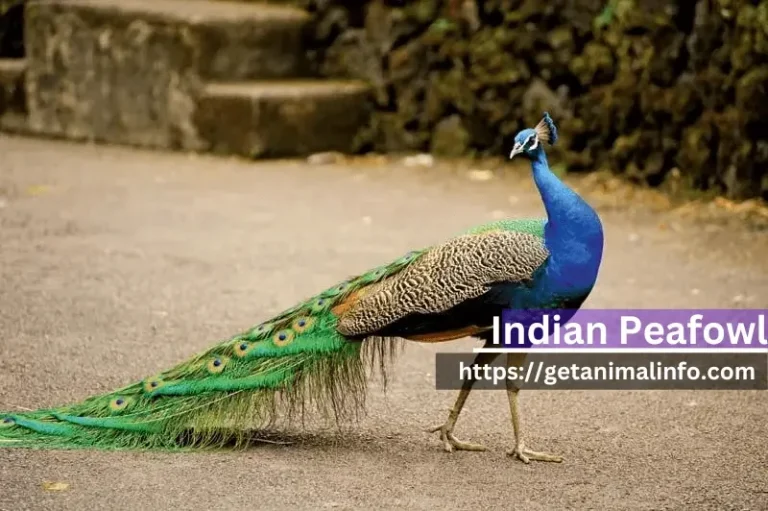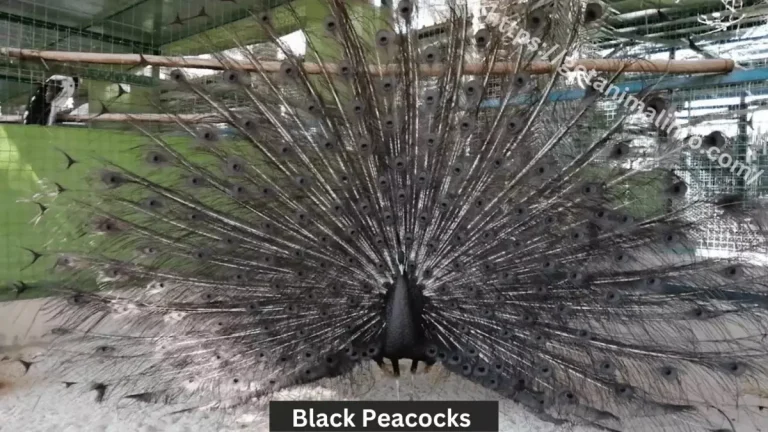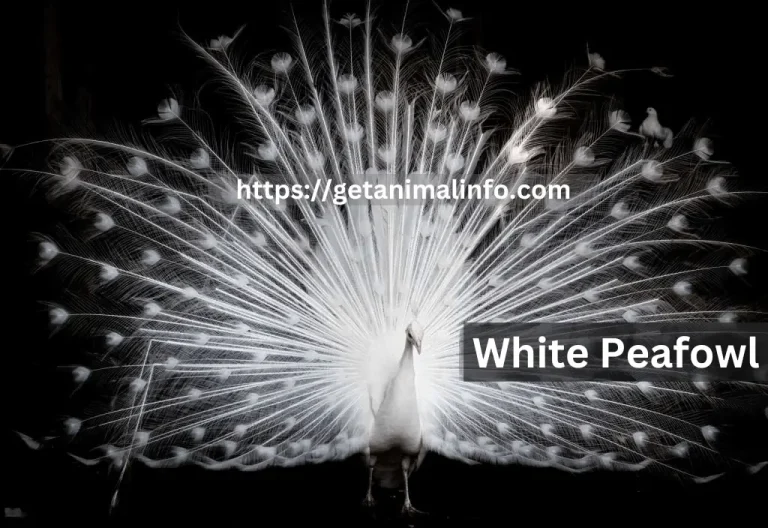Green Peacock-Facts, Habitat & Symbolization

The green peafowls are native to the tropical forests of Indochina and Southeast Asia. This is also called Indonesian peafowl, its scientific name is Pavo Muticus. Green peafowls are one of three species of peafowls, these three species are Indian, Javanese, or Congo peafowls. They are different from blue Indian peafowls and are commonly found in Southeast Asia.
Green peafowls have vibrant hues and majestic beauty. The color of these peafowls is metallic green adding an earthy look to their aura. This beautiful bird is known for its splendid presence and regal appearance. They captivate hearts with the display of colors in their feathers. Male peacocks have a longer feathered tail than females.
You can also read
Habitat and distribution
Green peafowls are found primarily in Southeast Asia. These magnificent birds are native to countries like Myanmar, Java, and the Malay Peninsula. The ideal place for Green peafowls are lush forests and grasslands to showcase their stunning plumage. In such a wide space they blend easily with the grassy surroundings.
They have a wide range of habitats that include primary or secondary forests, tropical, and subtropical, green or deciduous. Their habitats are not only geographically vast but also have huge diversity. This relationship between a green peacock and its environment shows the balance of nature. They prefer to live in forests or deciduous places near waterfalls and away from human disturbance.
Distinctive Features of Green Peafowl
The feathers of Green Peacock shine in green and blue colors and make a stunning pattern that seems almost like it’s from another world. The beauty of green peacocks is no less than a fantasy. They have a blend of vibrant colors on their tail. This colorful tail is known as a train. Peacocks have a long tail as compared to peahens. This long tail serves them in dancing during their mating season.
The feathers of green peacocks are not just pretty to look at but they are also really cool because they help the bird survive and communicate. These feathers display an immensely beautiful dance during their courtship. Courtship is a way to attract female peafowls by dancing with spread feathers for mating. These trains are not just used for dancing but peacocks communicate with their mates and convey their messages to them.
The size of the male peacocks can extend to 2-3 metres or 6.6 -9.10 ft from head to toe. The long tail can be from 1.3 to 1.6 metres or 4-5 ft. The young peahens are around half of the total length of peacocks. The tail cover of green peacocks is longer than Indian Peacocks. Both peacocks and peahens have a crest on their head. The crest of peahens is wider while the crest of peacocks is slightly longer.
They are green from their neck and chest while their tail has a blend of bronze, blue, and green colors. Whether they blend in with the leaves or catch the eye of a potential mate, every part of the Green Peacock’s colorful feathers has an interesting story about how they have adapted and changed over time.
Mating Habits
Green peafowls are both polygynous and monogamous. In the wild or forests, their behavior is polygyny which means that they mate with more than one female peahen. In Captivity or habitats, they are monogamous and are strictly bound to one female partner. Their reproduction season is from April to June. During this time peacocks attract peahens with courtship displays.
After pairing peahen make a nest in the ground in a very safe and protective place. More often they make nests in bushes and lay eggs. The number of eggs can be from 3 to 6. Peahens incubate these eggs for about 26 to 28 days. After incubation, peachicks are hatched from eggs. Mother peahen takes care of them for about 2 weeks after hatching. During this period they grow enough to move freely in their group.
Courtship Rituals of Green Peafowls
Green peacocks create a kaleidoscope of colors during their courtship to attract their female partners. People who want to see the beauty of nature in Peafowls, visit them in wild or open spaces in their habitats. During their mating period, Green Peacocks engage in their courtship rituals. If you see them this time it is like observing a ballet of nature unfold before your eyes.
Green Peacocks display a beautiful dance by fanning out their magnificent tail feathers in the air, it’s like a bunch of colours are dancing in air and spreading beautiful vibrant colors in the air.
Courtship display is the most fascinating ritual in the world of peacocks. People travel for hours to see this magnificent bird spreading the colours in the air. The mating season is from April to June for Green Peafowls.
When this time occurs, male peacocks need to pair up with females. They sing and dance to attract them. They fan out their beautiful and colourful feathers in the air and sing to attract peahens towards them. This act of showcasing their beautiful feathers to attract peahens is known as courtship display. This act is the most fascinating and captivating for the eyes who love to see the beauty of nature. Their courtship behaviour made them a very loving bird. After mating, peahens lay eggs and incubate them.
Taxonomy of Green Peacocks
The emperor of Japan gave a painting of green peafowl to the pope, on which it was previously described as Pavo Japonensis by Ulysses Aldrovandi in Europe. Then this species was classified as Pavo muticus by Carl Linnaeus. The Japanese then imported this beautiful bird from its native land Southeast Asia and it started appearing in their marvellous paintings. So habitats were built in Japan for these peacocks as they weren’t native to Japan.
Francois Levaillant was among the first Western bird experts to see a live bird brought from Macau to an animal collection in Cape of Good Hope. George Shaw, inspired by an Indian painting, described a peafowl from India as having a “blue head” and an “upright lanceolate crest,” naming it Pavo spicifer, the spike-crested peacock. Jean Delacour later described another form, P. imperator, found in Indochina.
Delacour suggested three races of green peafowl, merging P. spicifer into the species. Today, experts recognize three subspecies: Java peafowl, Indo-Chinese peafowl, and Burmese peafowl. Each of subspecies with distinct characteristics and geographic ranges. There are some debates and studies exist about their classifications and relationships, but these three subspecies are widely accepted.
Diet and Behaviour
Green Peafowls are considered as Omniverse as they can take their food from animals and plants. In animals they eat small insects and reptiles while from plants they like to eat seeds, fruits and herbs. They have sharp claws to scratch the soil and find their food out of it. This way they play a vital role in maintaining ecological balance in their native habitats. From seed dispersal to insect control, these birds are important components of the delicate circle of life in their environments.
Green peacocks are self dependent about their food. They live in grasslands or forests that have richness of their required food. But in captivity, the breeders have to provide them with the best diet in order to maintain their health. They have a normal life of 15 to 22 years but this range can vary with maintenance of good health and environment for them.
Green peacocks are environmentally friendly birds. They have a loving nature and like to live with other species of forests. Due to their unmatchable beauty and friendly behaviour, some people like to keep them as pets in their farm houses or habitats to enjoy the magnificent beauty of nature.
Cultural significance
Green peacocks are not just a representation of beauty but they have significant presence in different cultures from ancient times. We can see sculptures of peacocks on the old buildings in Asian countries. The fossils of old civilizations also provide us evidence for the significant importance of peafowls in their times. In some cultures they are associated with religion. Like in Hinduism peacocks have association with Goddess Sarawati and symbolise wisdom. In Greek mythology peacocks have a strong connection with Goddess Hera.
Green Peacocks have been part of myths, legends, and folklore from ancient times. This proves that they have been fantasised in certain ways by storytellers. They have been symbolised as beauty, royalty, protection, and spirituality. This symbolisation and religious association proves that green peacocks are more than just a bird in a world of mankind and of significant importance in the mystery of the world.
Conservation Efforts for Green Peafowls
Although green Peafowls are not rare but they have a threat of extinction from this planet. It is said that green peafowls are being hunt by some people in wild. The cutting of forests is also affecting their population because their natural habitats are getting disappeared. There is a significant number of species of birds that have already disappeared from our planet. So conservation efforts are needed to preserve this majestic beauty of nature and save it for the future on this planet.
According to the IUCN report, there are only 15,000 to 30,000 green peafowls. This is the total population of green peafowls and it includes 10,000 to 19,999 adult peafowls. Currently, this species is classified as Endangered (EN) on the IUCN Red List. The problem is that these numbers are decreasing everyday.
Wildlife researchers have developed such projects to conserve these species and their survival for future. One of the strategies is to shift them to better places or habitats that are environmentally friendly to them. Researchers and breeders are working on such programs to spread awareness to the general public about this wonderful and splendid bird. This beautiful miracle of nature needs the attention of mankind for their survival. All these collective steps for their conservation would benefit both sides.
Facts
Green Peacock Pros and cons
Pros
Cons
Frequently asked questions
Scientific classification
Common names
English
Spanish
Thai: นกยูง
Subspecies
Common name: Indo-Chinese peafowl
Range: East Burma to Thailand, Yunnan province in China and Indochina
Common name: Java peafowl
Range: Endemic to the east and western ends of Java
Common name: Burmese peafowl
Range: Found in Burma towards southwestern Thailand. Formerly also in Bangladesh as well as northern Malaysia
Conclusion
Green Peacocks are also called pavo muticus. They are available in Indochina and Southeast Asia. They live in their natural habitat like forests or grasslands. They are one of the most beautiful birds nature has created on this planet. From their captivating plumage to their crucial ecological roles, Green Peacocks stand as ambassadors of the natural world. They invite us to cherish and protect the diversity of nature that makes our planet so extraordinary.
They are bigger in size as compared to blue Indian Peafowls as they have longer tails. This tail is called a train in peacocks world. The feathers of this long train are used for courtship display during their mating period. They dance by spreading feathers in the air to attract their mates. This dance of peacocks looks like a play of colors in the air.
They are Omniverse and eat seeds, fruits, and insects. This balance of diet makes them eco-friendly birds. They have a threat of extinction as their number is decreasing with time. Through understanding, appreciation, and conservation, we can secure a future where the vibrant colors of the Green Peacock continue to grace our world for generations to come.






